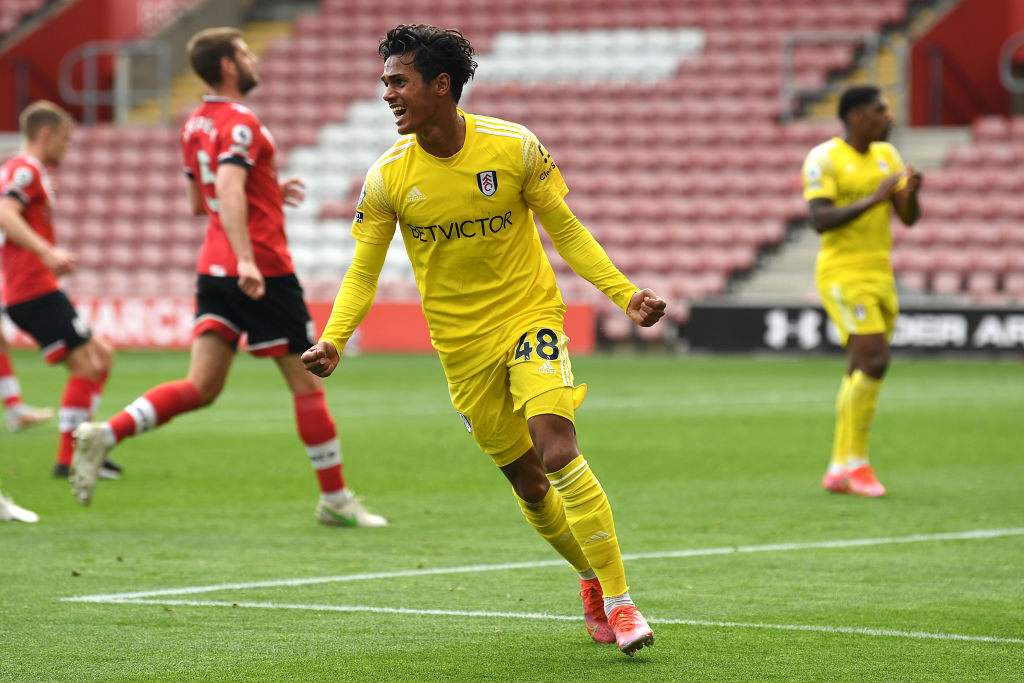With three games left and nothing to play for, Scott Parker Included Fabio Carvalho in his starting line-up at Southampton. The 18-year old’s performance provided Fulham supporters with a few crumbs of comfort from yet another defeat.
The match seemed to hark back to the earlier pattern with a tepid first half followed by a reasonably competitive second. In the 34th minute Joachim Andersen foolishly tugged Stuart Armstrong off balance, thereby setting up James Ward-Prowse for a free-kick to be neatly converted by Che Adams.
All 11 Fulham players were in the penalty area – but Adams had a clear sight of his target. The goal and Alphonse Areola’s later save from Ward-Prowse were the only highlights of the first period.
Fulham did show more spirit after the break but still looked vulnerable in defence while remaining underpowered in attack. On the hour, Nathan Tella doubled Southampton’s lead, gleefully converting Kyle Walker-Peters’ low cross through a packed penalty area.
Parker responded by sending on Ademola Lookman and the underused Joe Bryan. Sky’s microphones had already picked up Bobby DeCordova-Reid’s salty opinion of the service that he had been receiving and Lookman’s presence allowed him to switch to the right.
In no time Bobby fed Carvalho a superb pass which allowed the youngster to open his account. Fulham had scored four times in the previous nine matches so anything would have been welcome, but this was really good.
Little resistance
Hopes of a draw vanished, alas, when Theo Walcott scored his first goal since re-joining Southampton. All three Southampton goals were well crafted, but the static defenders offered little resistance.
Sleet in May was unexpected and so was Fulham’s amazing transformation between Southampton and Manchester United just three days later.
Having Joe Bryan on the pitch from the start, the strength and determination of Frank Anguissa, Joachim Andersen’s return to his best form, the growing confidence of Fabio Carvalho – these and other welcome ingredients brought delight to the long-suffering fans. It was good also to see Tim Ream made captain for the day.
Cheered on by 10,000 spectators United were soon testing Areola and his defence. The home side took the lead in the 15th minute with a most extraordinary goal.
David de Gea’s low clearance reached Edinson Cavani in an oddly empty mid-field. From 36 yards he lofted the ball over Areola’s fingertips. Referee Lee Mason and his assistants, believing that Bruno Fernandes had touched the ball en route to Cavani, awarded the goal – but the VAR showed no such intervention so Cavani was offside.
Incredibly, with so much technology available, offside was not given because ‘VAR could not prove conclusively that Fernandes had not touched it’. The reverse, using one negative less, would be that VAR could not prove that Fernandes had touched it, so the goal was offside. The Portuguese later admitted that he had not made contact.
An injury to Harrison Reed on the half-hour brought Andersen into the defence and United’s attack lost its effectiveness. Fernandes had various attempts, but Areola had no intention of being beaten again. Anguissa created an opening for Carvalho, who should really have outwitted de Gea.
In the second half Lookman, Carvalho and Bryan combined well on the left, but the equaliser came from the right. Tim Ream started the movement, then Anguissa passed to Bobby DeCordova-Reid, whose centre was firmly headed past De Gea by Joe Bryan. VAR pondered at length over Bobby’s possible offside but did not assist United this time. Bryan’s goal came in the 76th minute, and Fulham preserved the point with remarkable ease. The whole team’s performance was commendable.
Jack Peart
During the Southampton game, a Sky commentator referred to a past Fulham manager called Jack Peart (though he mispronounced it to rhyme with ‘shirt’).
Jack was in charge when I started watching the club in 1948. I have lost count of his successors, but as I have seen all the club’s managers apart from the first seven I am occasionally asked to name the best.
How can I rank them fairly?
One man may have millions of pounds at his disposal, another may see his best players sold to pay off the club’s debts. In chronological order I would nominate:
- Bedford Jezzard (1958-64)
- Alec Stock (1972-76)
- Jean Tigana (2000-03)
- Roy Hodgson (2007-10).
Many congratulations to Roy on his retirement as manager, though I am sure he will be in demand as a commentator and adviser.
EM Forster wrote a book entitled Two Cheers for Democracy. This week our favourite club has earned at least two cheers, one for the draw at Old Trafford and another for the Under 18s, who have once again won the Championship of the Premier South.
Reasons to be (a bit) cheerful as the season comes to a close.
The views expressed in this blog are those of the author and unless specifically stated are not necessarily those of Hammersmith & Fulham Council.
Want to read more news stories like this? Subscribe to our weekly e-news bulletin.

